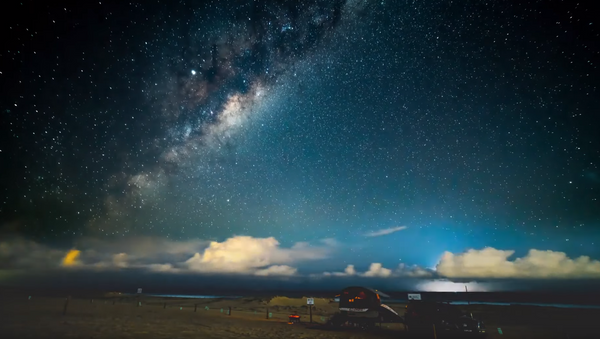The Milky Way is just one of a myriad of galaxies scattered around the ever expanding universe, with NASA’s Hubble Space Telescope putting the total number of those it has managed to map at around 100 billion.
Despite the Milky Way, where life has famously and uniquely emerged, being the subject of numerous studies, it seems that newer and fresher ones will never cease to appear.
In her newly released book titled “Milky Way. Owners’ Workshop Manual”, Gemma Lavender, a member of the Royal Astronomical Society, an astrophysicist, and writer, has given reasons why common interest for the Milky Way continues to be on the rise.
“It looks like a river of light but train a telescope on part of it and you will see that it is constructed from countless stars", she started off, before continuing in incessantly romantic terms:
"Look even closer and you will see that among the stars are pockets of gas and dust, some colourful, others dark and hidden".
Astronomers estimate that the Milky Way is about 13.5 billion years old, but it took a long time for the galaxy to arrive at its current shape, the researcher writes. Moving on to explain the intriguing hypothesis, which is now common belief, the researcher says that approximately four to five billion years from now, the Milky Way’s neighbouring Andromeda galaxy is expected to come crashing into us.
The author contends that the final collision will create a new galaxy, sometimes referred to as the Milkomeda.
“Our two galaxies will start ripping chunks out of each other, tidal streams trailing away their central bars destroyed and their spiral arms twisted this way and that”, she continued, not totally ruling out a second collision event:
“Perhaps there will be a second close encounter after the as they spiral towards each other, and then, in this deathly gravitational embrace, the two disrupted galaxies will ultimately spin back around and literally fall into each other’s arms, their stars and gas becoming mingled”.
The astrophysics of the process is depicted in the minutest detail:
“Their molecular gas clouds will meet head-on and huge bursts of star formation will ignite”, Lavender writes.
The Milky Way, the product of the Big Bang that occurred 13.5 billion years ago, is a spiral galaxy that boasts four arms protracted around a supermassive black hole dubbed Sagittarius, located in its centre.
Astronomers have recently found evidence that the Andromeda galaxy, located next to the Milky Way, has already been involved in several mass-eating events. A study co-led by Dr Dougal Mackey from Australian National University and published in the journal Nature has concluded that Andromeda first went on a galaxy-eating frenzy about 10 billion years ago when it was in the first formation stages. Six billion years later, another instance of such a kind occurred, followed by number of smaller events.

